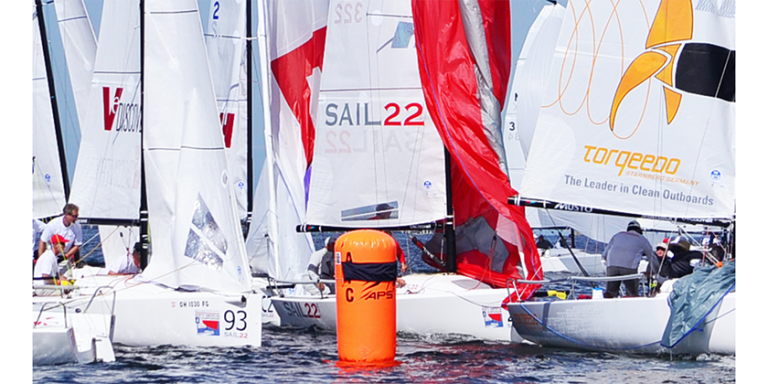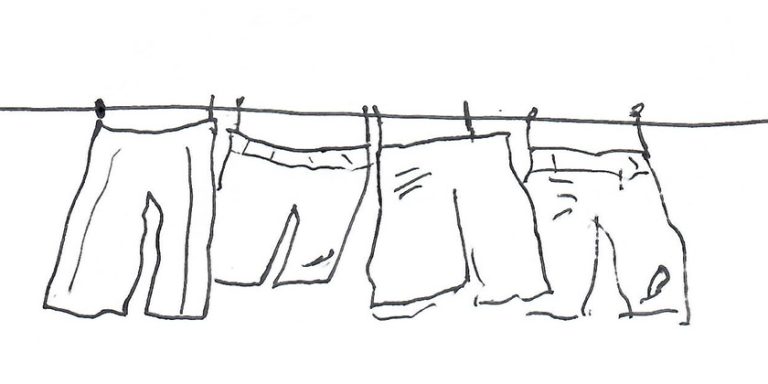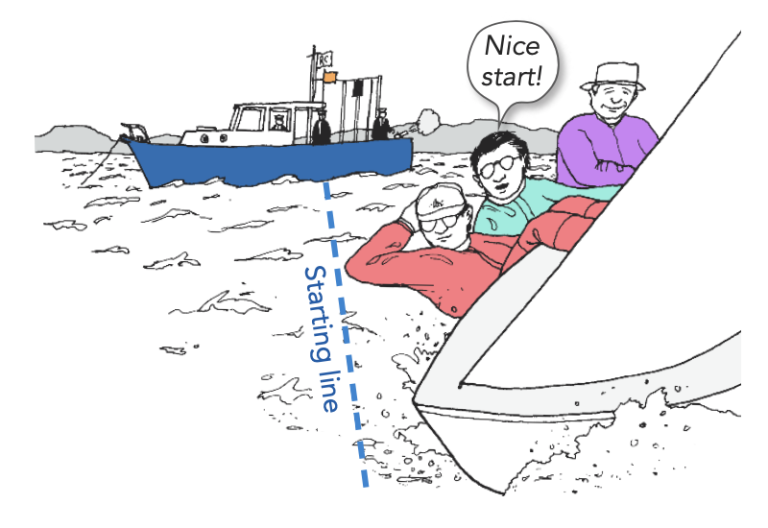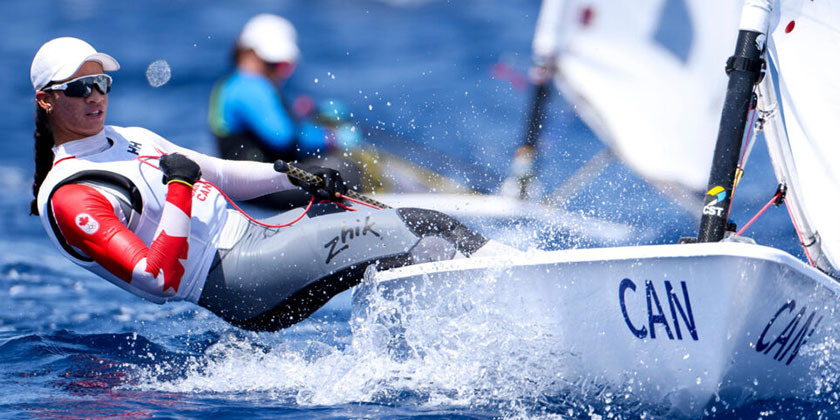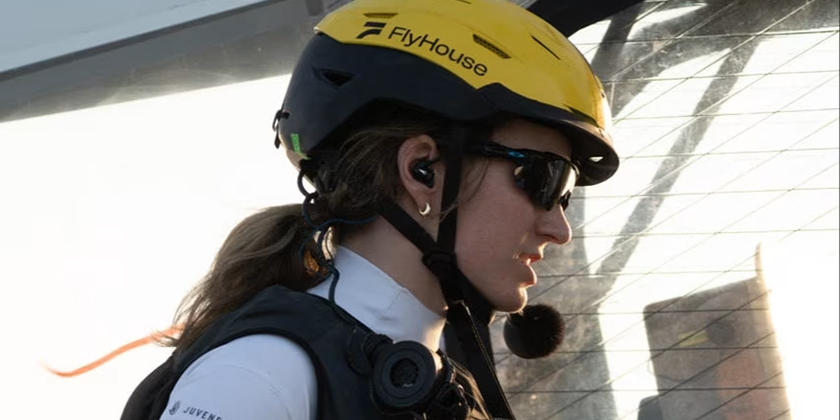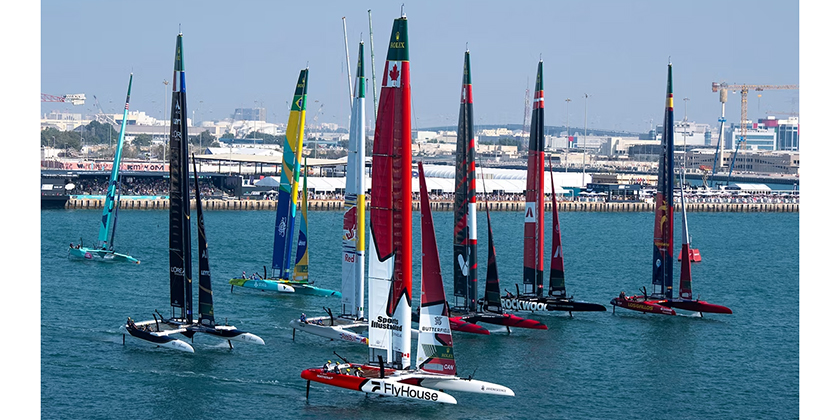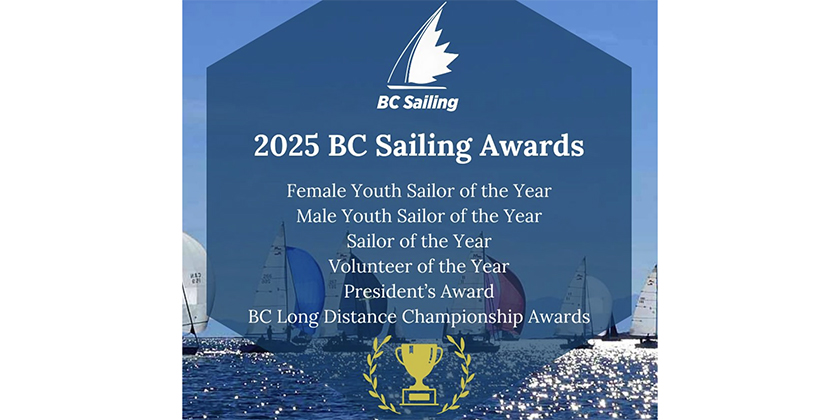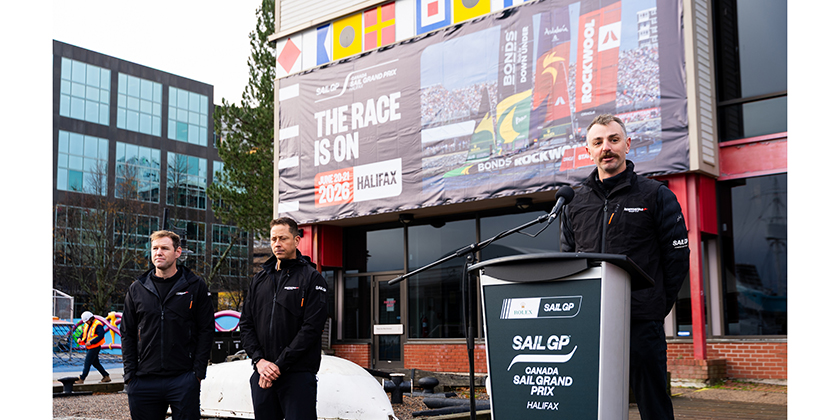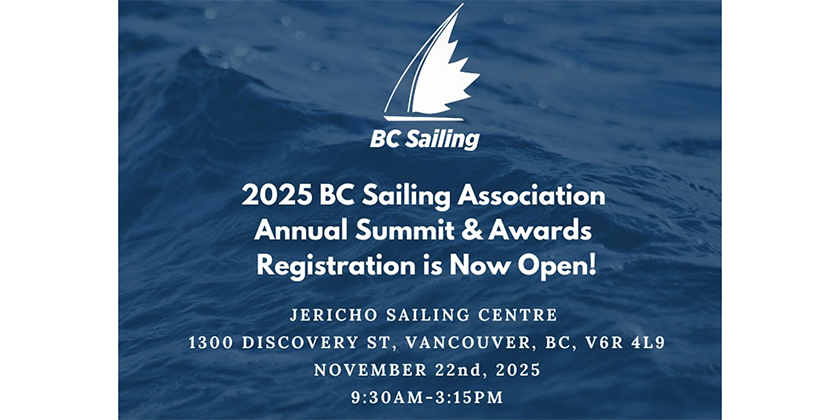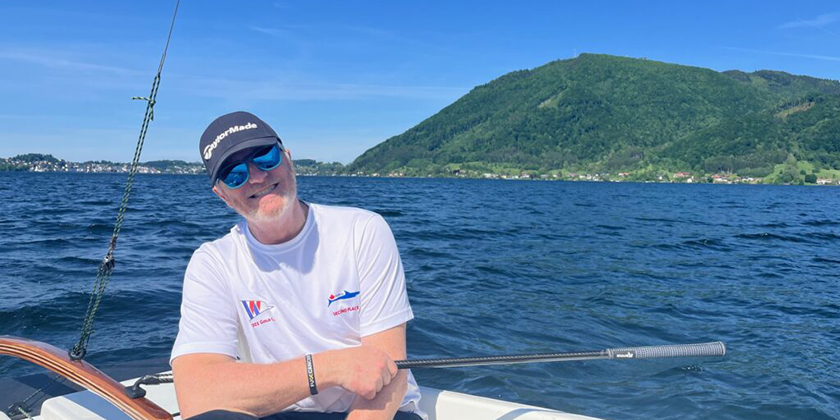Speed & Smarts: MORE Starting Strategy & Tactics – Part 3
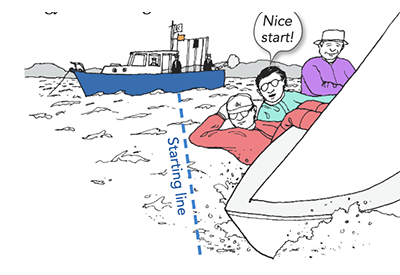
January 18, 2023
Read Part 1 HERE.
Read Part 2 HERE.
Control your destiny
A good start is all about getting what you want and not letting other boats stand in your way. In the ideal world you want to start in the position you choose on the line, carve out a certain amount of space around you, and then come off the line with clear air and speed.
Getting to that point requires a series of small maneuvers during the last couple of minutes before the start. Perhaps the most critical thing as you approach the start is keeping your options open. When you need to tack or jibe, for example, you don’t want another boat blocking your way. It’s hard enough to get a good start when you can go wherever you want, so don’t let other boats limit your choices. The success of a start depends on doing a lot of little things right as you approach the line, so pay attention to detail and work as a team to follow your plan. A solid approach to the line usually results in a successful start.
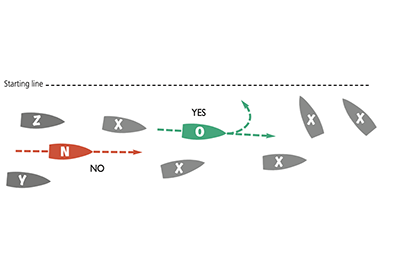 Keep your options open
Keep your options open
When you are making your final port-tack approach before the start, don’t let yourself get pinned by other port-tackers. Here Boat N has lost control of her start – she can’t tack because of Boat Z or jibe because of BoatY. While N waits for one of them to clear out, she may run out of good starting opportunities.
Boat O is in much better shape because there are no boats overlapped with her. She is in control of her approach and has the flexibility to tack whenever she wants. This is critical because the important thing is what she does with the starboard tackers; this is hard enough without other port-tackers getting in the way.
If there is a possibility that you may get pinned on your final port-tack approach, be proactive to avoid this. Don’t tack or jibe into a position that is close alongside other port-tackers. Avoid getting caught in packs of boats. Don’t sail in to leeward of a boat that is going slowly in front of you. If another boat tacks or jibes into an overlap position, bear off or luff up aggressively so you fall astern of them, or they fall astern of you. In all cases your goal is to gain or maintain the option to tack whenever you want so you can maneuver into the starboard-tack lineup.
If you get pinned on port tack more than occasionally, change the timing of your approach. Try getting on to port tack earlier before most of the fleet is doing the same thing. That way it will be easier to tack back onto starboard and you can focus on your final approach rather than on how to evade other port tackers.
 Optimize your Reward/Risk ratio
Optimize your Reward/Risk ratio
Your goal at any start should be to maximize the potential reward you get from the start while simultaneously minimizing the risk of having a bad start. In the diagram below, the boat end is quite favored, so Boat Z could be in great shape. However, there is also a huge risk that she will get stuck in the pack, so her net reward/risk ratio is not very high. Boat Y is taking much less risk, but she is so far down the line that she won’t be in good shape even with a great start. So her reward/risk ratio is also not very high. Boat O is close enough to the end that she won’t give away too much distance, but she is also far enough away to reduce her risk from other boats. Her ratio of reward to risk is higher; the highest ratio is usually somewhere in this middle ground just beyond the pack of boats near the ‘favored’ end.
Don’t let up at the starting signal
When the starting gun goes off, it represents the culmination of much of your pre-start planning. But it doesn’t mean you are done with your starting strategy. The purpose of all the starting tactics described in this issue is so you can follow your game plan on the first beat. The starting signal is just one moment in that process – what happens afterward may be just as critical as what happened before.
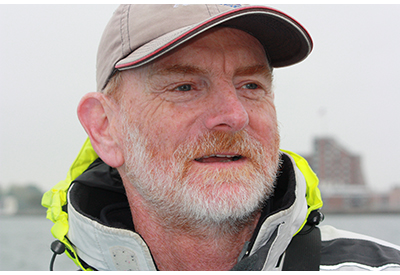 Dave Dellenbaugh is the publisher, editor and author of Speed & Smarts, the racing newsletter. He was the tactician and starting helmsman on America3 during her successful defense of the America’s Cup in 1992 and sailed in three other America’s Cup campaigns from 1986 to 2007. David is also two-time winner of the Canada’s Cup, a Lightning world champion, two-time Congressional Cup winner, seven-time Thistle national champion, three-time Prince of Wales U.S. match racing champion and past winner of the U.S. Team Racing Championship for the Hinman Trophy. He is currently a member of the US Sailing Racing Rules Committee (and was its chairman from 2005-2008).
Dave Dellenbaugh is the publisher, editor and author of Speed & Smarts, the racing newsletter. He was the tactician and starting helmsman on America3 during her successful defense of the America’s Cup in 1992 and sailed in three other America’s Cup campaigns from 1986 to 2007. David is also two-time winner of the Canada’s Cup, a Lightning world champion, two-time Congressional Cup winner, seven-time Thistle national champion, three-time Prince of Wales U.S. match racing champion and past winner of the U.S. Team Racing Championship for the Hinman Trophy. He is currently a member of the US Sailing Racing Rules Committee (and was its chairman from 2005-2008).
You can subscribe to the Speed & Smarts newsletter HERE.

